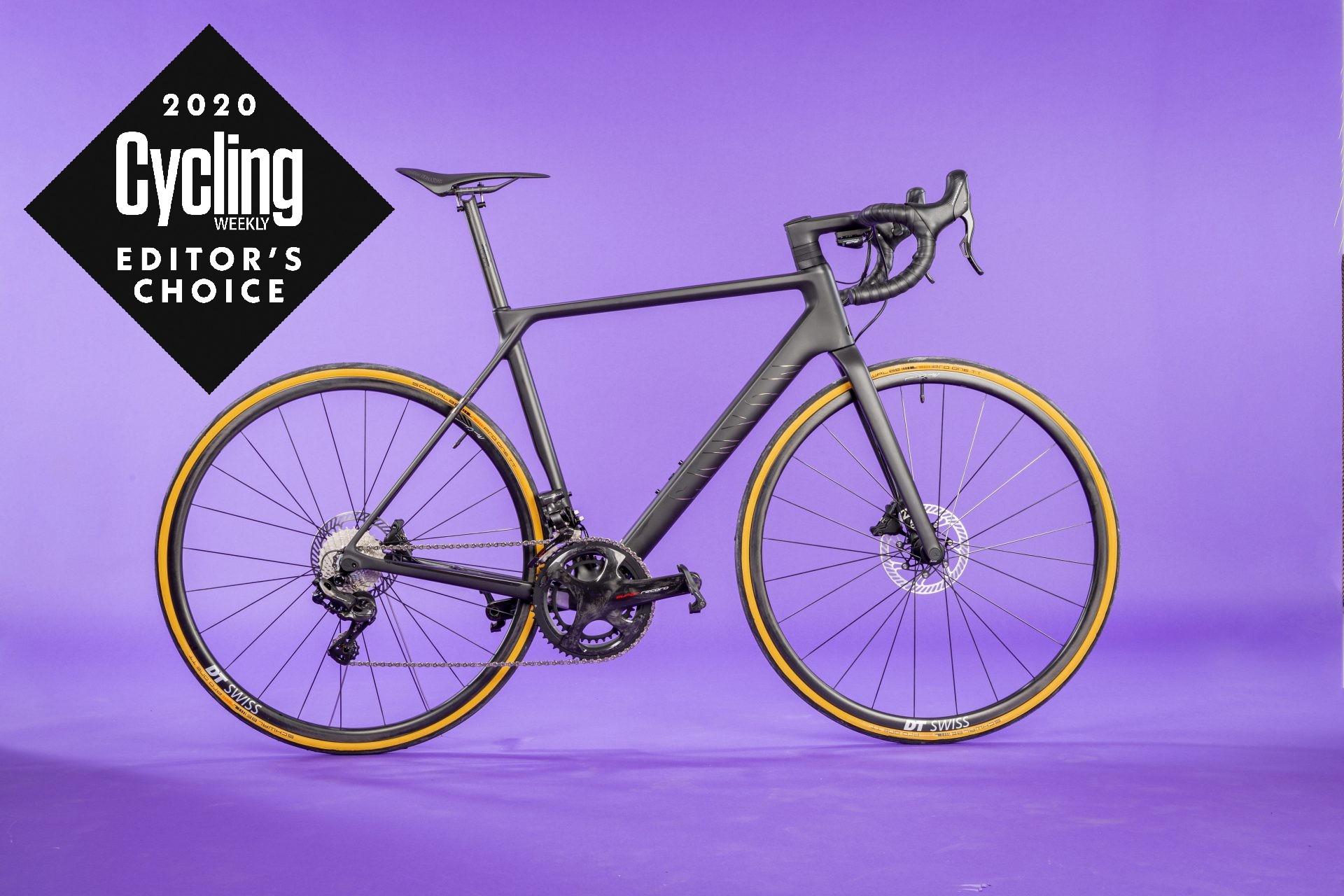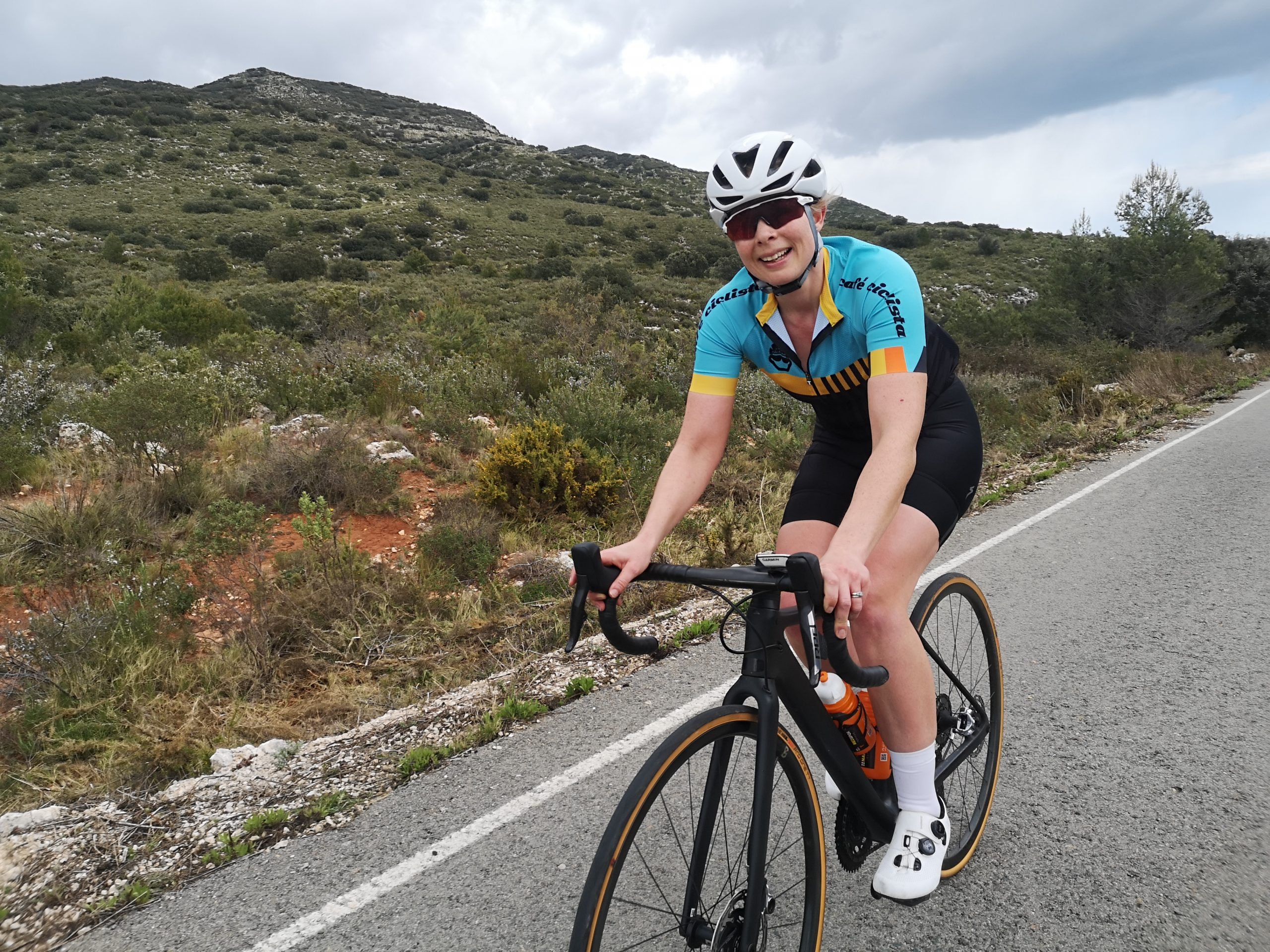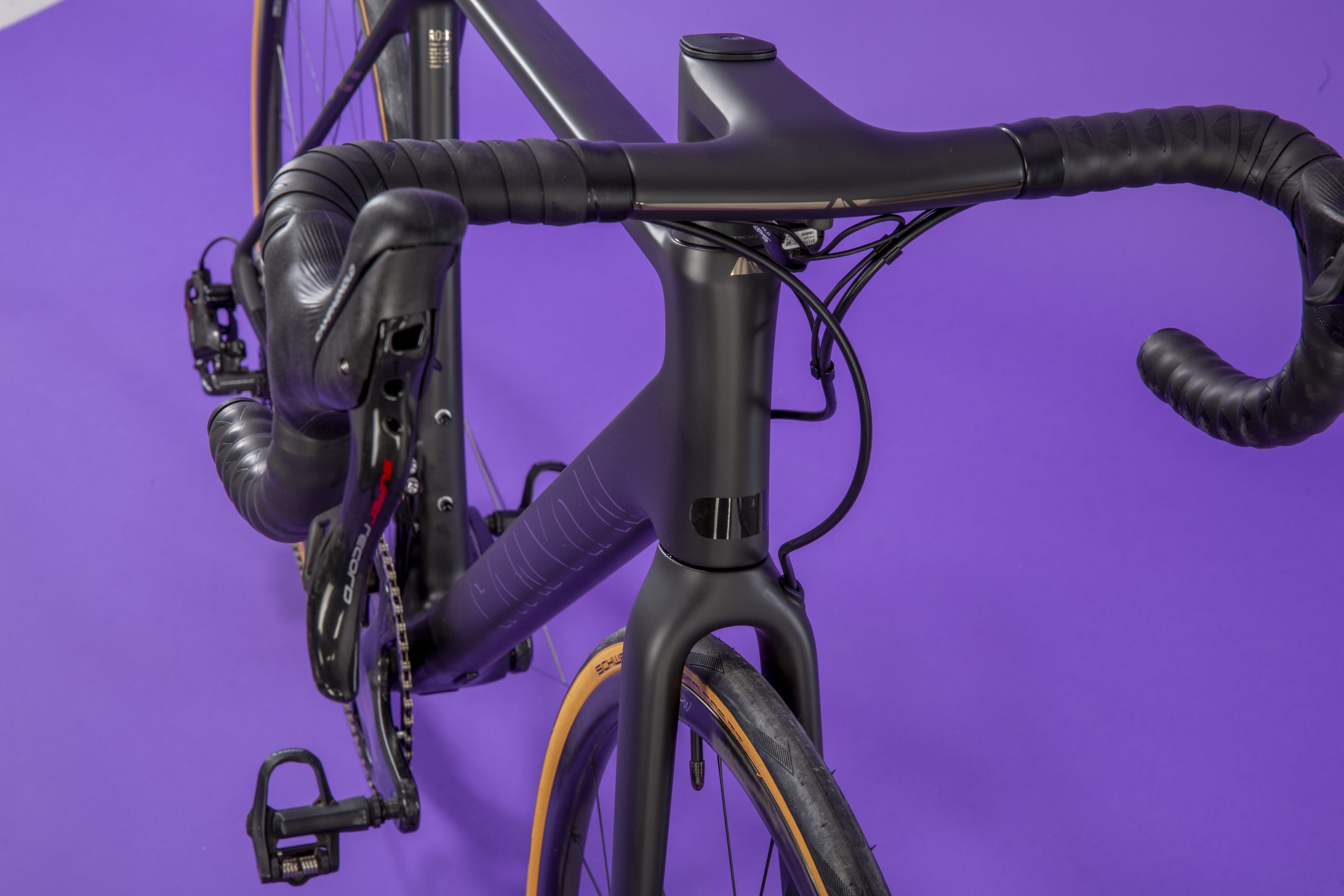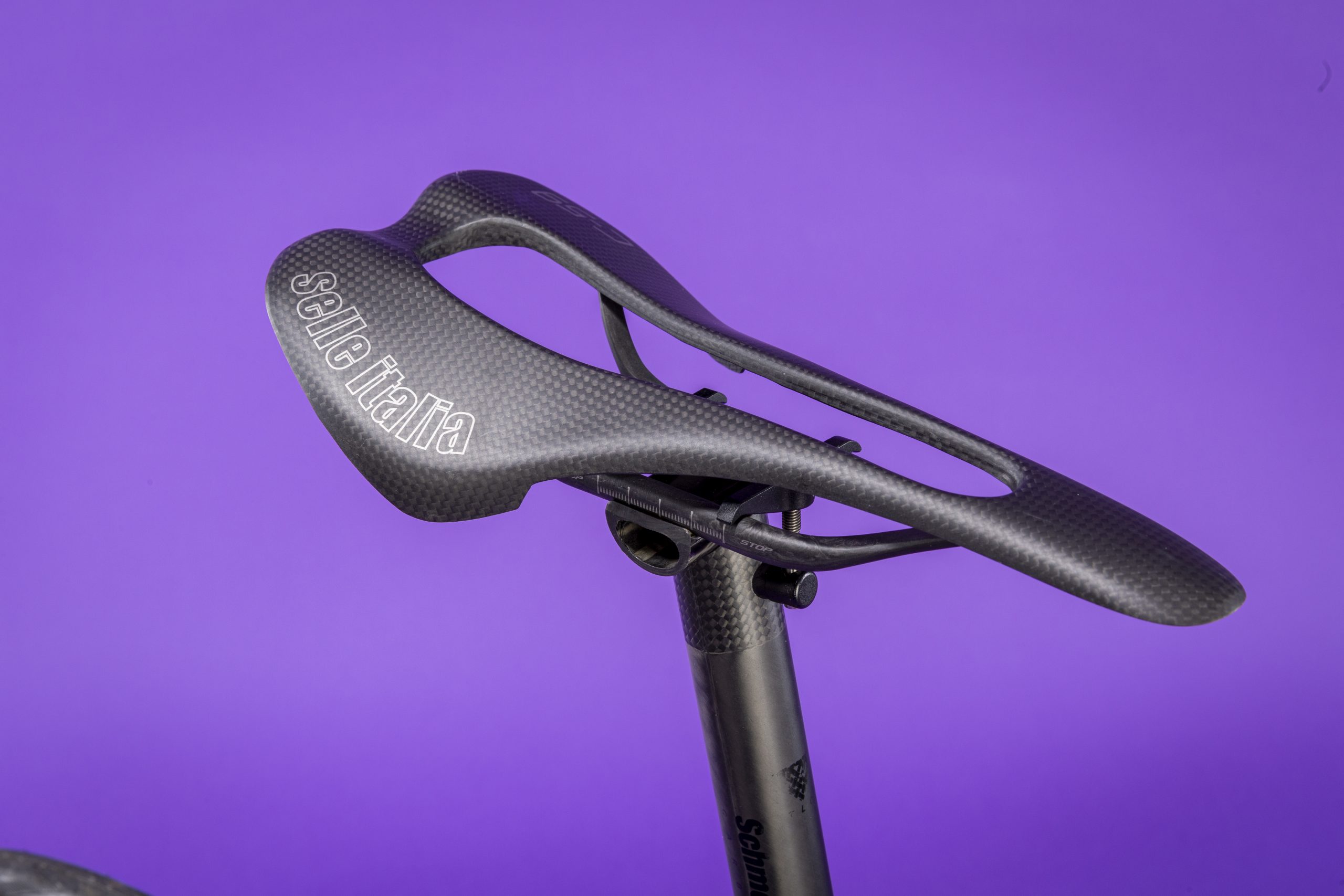Canyon Ultimate CFR review
Weighing in at 5.98kg - does the Ultimate Evo make any sacrifices on its way to race weight?

The Canyon Ultimate Evo impressed me from the very first pedal stroke, and it rewarded me with a plethora of personal bests on climbs in the UK and abroad. The handling wasn't as sharp as I would expect from a race bike, and some aero nods may be due soon. All this said, I've logged over 1,000 kilometres on this machine and I'm loathe to send it back to its rightful owners.
-
+
Light
-
+
Stiff
-
-
Handling lacks sharpness
You can trust Cycling Weekly.

The Canyon Ultimate CFR/Canyon Ultimate Evo was selected for an Editor's Choice award in 2020. This year's list contains 78 items which scored a 9 or 10/10 with our tech team - this gear is the best of the best, and has received the Cycling Weekly stamp of approval.
At time of review, this bike was called the 'Canyon Ultimate Evo' - Canyon has since changed the name to the Canyon CFR, though the frame remains unchanged. The model reviewed came with a Dura Ace Di2 groupset, at £7449. The model pictured is the 2021 build, with Super Record EPS at £8449.
On my first ride aboard the Canyon Ultimate Evo Disc 10.0 SL, I set a new PB up my local test climb - Toys Hill. A PB on 'new bike day' legs is not necessarily remarkable, but it is quite notable considered alongside the fact I've ascended that 1.8 mile stretch on an almost weekly basis over the last couple of years, in an array of conditions.
Happily, I also had the chance to take the bike with me on a training camp staying with Cafe Ciclista in Denia - logging over 500km on smooth tarmac before returning to the rutted roads of Kent and Surrey. In total, I've covered close to 1,100km on the Evo.

The Ultimate Evo Disc is Canyon's lightest ever disc brake equipped production bike. My size XS weighed in at 5.98kg. That's with the carbon Selle Italia SLR C59 saddle fitted, which I removed pretty much straight away. Even with pedals, bottle cages and a more sensible perch attached, it's comfortably under the 6.8kg mark set by the UCI.
The Evo was released in 2019, and this 2020 model shares the same frame. The only real difference is the tyres have been exchanged with the newest iteration, sporting a fetching pair of Schwalbe Pro One TT Evo tanwall rubber shoes.
To create the 675g frame and 285g fork, Canyon used a new carbon layup comprised of ultra high modulus (UHM), ultra high tension (UHT) carbon fibre; weighing in at 90g per square meter.
The obvious concern with a super lightweight frame is that stiffness will have taken a big hit, but Canyon says the stiffness to weight ratio has been improved in this iteration. You only have to lift the bike up to confirm it's lighter, and it takes just a few pedal strokes to realise that the stiffness story is no fairytale, either.
The Ultimate Evo strikes a delightful blend on the stiffness/comfort pendulum scale - riding it set me grinning from ear to ear from the very first mile, and I've barely stopped grinning since.

At the front, Canyon has employed its dedicated Evo cockpit CP20 - this is constructed from the same UHM and UHT carbon fibres as the frame and fork. It tips the scales at 270g, and slices through the air with what can only be described of as effortless efficiency. The bar absorbs a lot of vibration too, even on rutted roads, to the extent I never felt the effect of the bumps too keenly.
Where some aero cockpits can be a hassle to adjust, Canyon's stem system is easy to manipulate. Mainly thanks to a solitary Torx bolt at the headset and two stem bolts located at the back. There's plenty of stack height to play with, I rode at half-mast though I'd probably have played with slamming it if the handlebars had been closer to my narrower preference instead of the 40cm bar fitted.
At the rear end, Canyon has used its 'Schmolke 1k' carbon seatpost. This swanky design has been constructed to be as light as possible - high stress areas feature 17 layers of very thin carbon fibre prepreg, whilst low stress areas use just 9 layers. The clamp is located within the frame, with a bolt around an inch beneath the seatstay bridge. Canyon makes no claim to adding compliance with this design, but I'd say the rear end offers a comfortable platform, for a race bike.

There are multiple tiny weight saving features dotted throughout the frame - the reduced graphics shave off a fraction, as does the use of an integrated carbon front derailleur mount, titanium screws instead of steel and low weight aluminium thru-axles. Stiffness under braking forces is second to none, I never felt any judder through the bars and the front end always felt planted.
The Ultimate is a race bike - so its geometry is relatively agressive, with a stack/reach of 522mm (when slammed)/378mm and a 71 degree head angle lending agile front end reactions.
However, and this is a very big however: the wheelbase on an extra small disc model comes in at 988mm, with the same 415mm chainstay length applied across all sizes. For reference, the rim brake model has a wheelbase of 980mm which is still longer than the likes of the Specialized Tarmac, which in a 52 comes with a measurement of 975mm. Even Canyon's Endurace, the endurance race model, in an XS measures 982mm.
>>> Road bike geometry explained
A quick reminder - as a general rule - short wheelbase means quick and snappy, long wheelbase is assured and stable. I did feel confident on the Ultimate Evo, but before I'd even set eyes on the geometry table I was a little troubled by the slightly dull handling - I love the bike, but I'd love it that little bit more if it were more quick footed and agile.
Canyon has specced this model with DT Swiss' 25th Anniversary disc carbon clinchers - these come with 24mm rims, aero hubs and ceramic bearings for smooth rolling. The artwork is embossed, another weight saving.
The wheels have been shod with Schwalbe's Pro One TT Evo tyres. When riding on the smooth roads in Spain, they did seem to possess a slightly odd draggy characteristic. I also lacked a little confidence in them in their 25mm width, almost wishing I could have a pair of 28s to add a little extra grip in the corners.

One area the tyres did hold out surprisingly well was in puncture resistance. After hours of riding on some of Surrey and Kent's worst and most reguarly flooded roads, I've yet to puncture. Frankly it feels like I'm pushing my luck.
This model comes with SRAM's Red e-Tap AXS groupset with hydraulic disc brakes. The whole system works like a dream, and you'd expect it to, considering it received a 10/10 score when last on test. You also get a Quarq DZero power meter fitted as standard, and I found this to be extremely accurate and reliable throughout the testing period - not a statement I can make about my usual, day-to-day power meter which has had me smacking the bars in frustration regularly over winter.
Aside from the aero cockpit, Canyon's Ultimate doesn't have any major claims to drag reduction, making it more of a thoroughbred climber than some of the more homogenous all-rounders we see on the market in 2020. Personally, I love the unbridled feel of a climb hungry race bike and I've yet to really adapt to the damper - albeit faster according to physics - aero adaptations we see so from many other brands.
Exceptional ride feel aside, physics does still attest that aero is faster, and some customers may feel that the Ultimate is due an update in terms of its missing the likes of an aero seatpost and more teardrop shaped tubes.
Of course, at £7449, the Ultimate Evo is not cheap. However, boasting the brand's very pinnacle in carbon technology, SRAM's top flight groupset, an inbuilt power meter and a tasty carbon wheelset, I can't really fault the value for money against competitors. This sort of set up would cost closer to £10k from many competitors.

Thank you for reading 20 articles this month* Join now for unlimited access
Enjoy your first month for just £1 / $1 / €1
*Read 5 free articles per month without a subscription

Join now for unlimited access
Try first month for just £1 / $1 / €1
Get The Leadout Newsletter
The latest race content, interviews, features, reviews and expert buying guides, direct to your inbox!
Michelle Arthurs-Brennan the Editor of Cycling Weekly website. An NCTJ qualified traditional journalist by trade, Michelle began her career working for local newspapers. She's worked within the cycling industry since 2012, and joined the Cycling Weekly team in 2017, having previously been Editor at Total Women's Cycling. Prior to welcoming her first daughter in 2022, Michelle raced on the road, track, and in time trials, and still rides as much as she can - albeit a fair proportion indoors, for now.
Michelle is on maternity leave from April 2025 until spring 2026.
-
 'This is the marriage venue, no?': how one rider ran the whole gamut of hallucinations in a single race
'This is the marriage venue, no?': how one rider ran the whole gamut of hallucinations in a single raceKabir Rachure's first RAAM was a crazy experience in more ways than one, he tells Cycling Weekly's Going Long podcast
By James Shrubsall Published
-
 Full Tour of Britain Women route announced, taking place from North Yorkshire to Glasgow
Full Tour of Britain Women route announced, taking place from North Yorkshire to GlasgowBritish Cycling's Women's WorldTour four-stage race will take place in northern England and Scotland
By Tom Thewlis Published
-
 Positive signs for UK bike industry as Halfords cycling sales grow
Positive signs for UK bike industry as Halfords cycling sales growRetailer admits that the impact of Donald Trump's tariffs remains to be seen
By Tom Thewlis Published